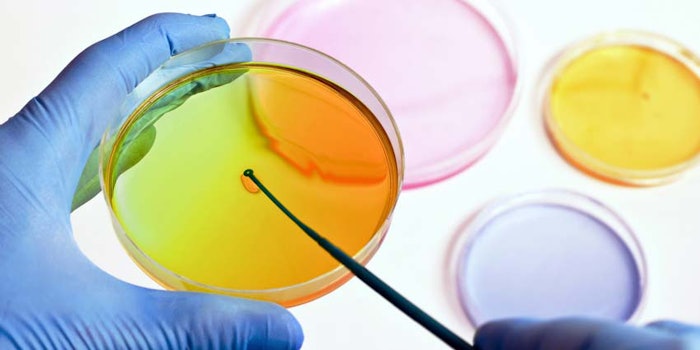
Research published in the Journal of Analytical Science and Technology describes the NMR structure and bactericidal efficacy of a KR-12 analog, derived from the human LL-37 antimicrobial peptide, which shows promise as a safe and effective cosmetic preservative.
Scientists at Chonnam National University and Kwangju Women’s University in Korea sought to develop a natural antiseptic for cosmetics to replace preservatives such as parabens that have been flagged for potential cytotoxicity and allergic effects. They looked to antimicrobial peptides, an important component of the innate immune system, for their ability to physically destroy bacterial cell membranes and induce lysis.
According to the paper, LL-37 is a natural antimicrobial peptide expressed in the human body. It is a long peptide with 37 amino acids, is structurally cationic, and is an amphiphilic α-helical AMP known to exhibit direct antimicrobial activity by binding and neutralizing LPS; it also has been recognized as an effective treatment for Gram-negative bacterial infections and inflammatory diseases.
See related: Preserving Microbiome Harmony, Antimicrobial Peptides Balance Skin Health
KR-12 (KRIVQRIKDFLR-NH2) is a peptide from LL-37 and the shortest derivative with antimicrobial activity. KR-12 retains the amphipathic helical conformation of LL-37 and contains five positively charged residues. One KR-12 analog in particular with a nearly perfect amphipathic α-helical structure, referred to as KR-12-pa, shows highly effective antimicrobial and anti-inflammatory activities.
In this study, the authors determined the three-dimensional structure of KR-12-pa and evaluated its bactericidal activity in a cosmetic formulation. In brief, the KR-12-pa folds into a symmetric amphipathic α-helical structure in a membrane-like environment. It shows strong antimicrobial activity against various bacteria and fungi even when used in cosmetic preparations. Moreover, it shows low toxicity to mammalian cells. Therefore, KR-12-pa shows potential to be developed as a new naturally derived alternative cosmetic preservative.
For more information, see the full open access article, offered under a Creative Commons license.









